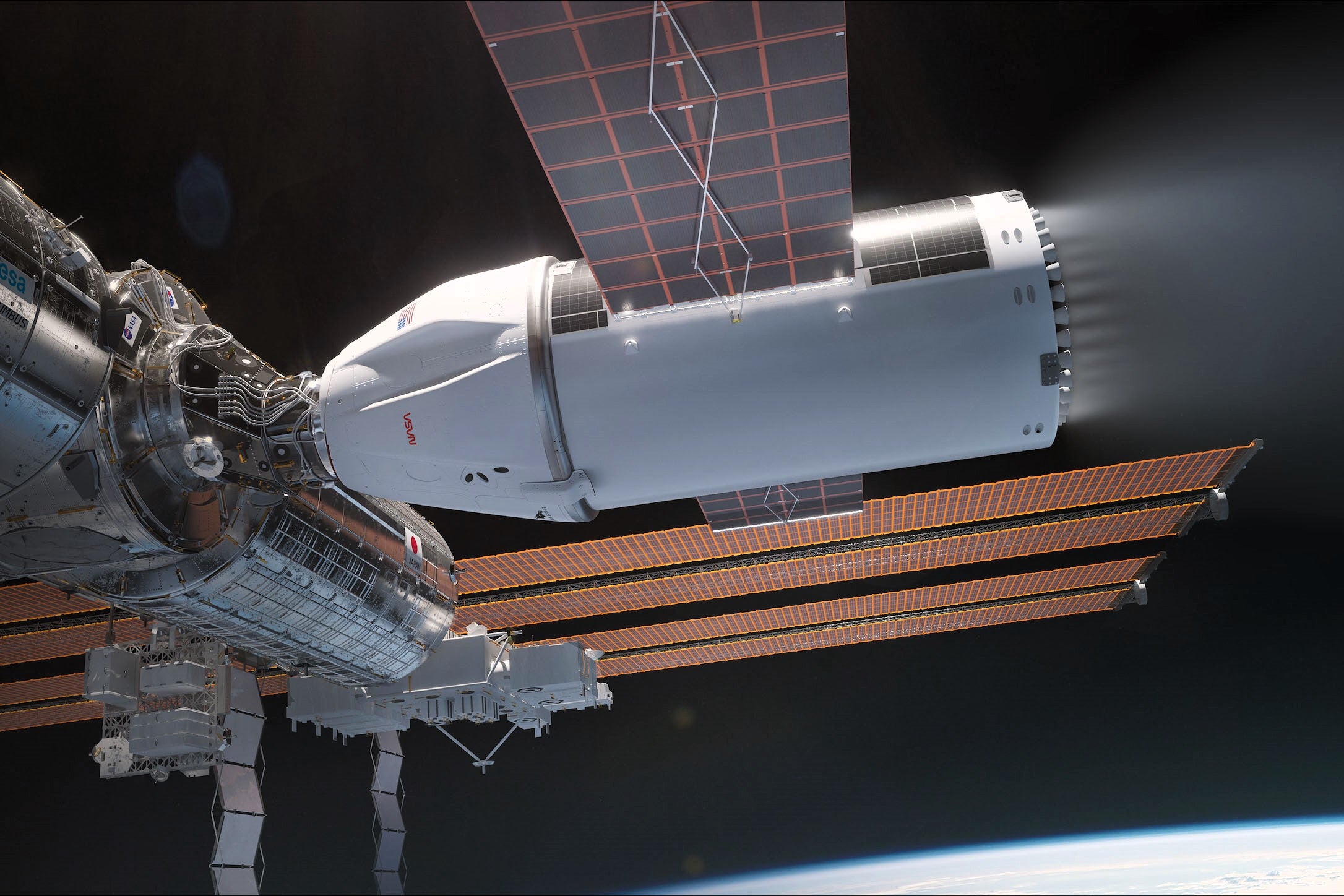SpaceX reveals how it will destroy the ISS
Deorbit Vehicle is souped-up version of the Dragon spacecraft

Your support helps us to tell the story
From reproductive rights to climate change to Big Tech, The Independent is on the ground when the story is developing. Whether it's investigating the financials of Elon Musk's pro-Trump PAC or producing our latest documentary, 'The A Word', which shines a light on the American women fighting for reproductive rights, we know how important it is to parse out the facts from the messaging.
At such a critical moment in US history, we need reporters on the ground. Your donation allows us to keep sending journalists to speak to both sides of the story.
The Independent is trusted by Americans across the entire political spectrum. And unlike many other quality news outlets, we choose not to lock Americans out of our reporting and analysis with paywalls. We believe quality journalism should be available to everyone, paid for by those who can afford it.
Your support makes all the difference.SpaceX has unveiled its plan to destroy the International Space Station after three decades of service.
Elon Musk’s private space company will use a powerful spacecraft to push the ISS into a precise deorbit trajectory that will see most of it burn up in the Earth’s atmosphere. The parts that survive reentry will land in a part of uninhabited ocean that is yet to be named.
Details of the mission were provided during a press conference on Wednesday, three weeks after Nasa awarded SpaceX an $843 million contract to bring down the space station.
ISS program manager Dana Weigel revealed that the space station will first perform a “drift down” from its normal orbit roughly 12 to 18 months before the forced deorbit.
“Our plan is for [the astronauts] to leave about six months before the final reentry, as ISS reaches about 220 kilometres (136 miles),” Ms Weigel said.
Once the space station has reached this altitude – roughly 180 km lower than its typical altitude of 400 km – SpaceX’s new craft will “perform a series of burns to set us up for that final deorbit, and then four days later it will do the final re-entry burn”, Ms Weigel added.
SpaceX’s vehicle is essentially a souped-up version of its Dragon capsule, which is used to carry crew and cargo to the ISS.
The Deorbit Vehicle has 6 times more propellant and four times the power of today’s Dragon spacecraft, according to SpaceX.
“One of the benefits of leveraging Dragon’s rich flight history is that we can continue to use Nasa-certified hardware for a number of the key systems, like the docking system,” said Sarah Walker, director of Dragon mission management at SpaceX.
“While the assembly level design is uniquely developed to this mission, we intentionally use building blocks of components that Nasa is familiar with and that SpaceX has extensive experience building and operating.”
No exact date has been given for the deorbiting of the ISS, though most of the international partners have committed to operations until 2030. Only Russia is leaving earlier, probably around 2028, having departed the consortium following its invasion of Ukraine.
Join our commenting forum
Join thought-provoking conversations, follow other Independent readers and see their replies
Comments